Source
Are your Facebook ads underperforming? Wondering what can be done to increase your conversions?
In this article, you’ll discover a Facebook ads strategy that really works.
Then… things got quieter. What happened?
Facebook ads got expensive and there was more competition for ad space on Facebook and Instagram. It was harder to get a return on your ad spend.
But things have started to change once again. eCommerce businesses are seeing their revenue grow. It’s easier to get valuable ad placements. The average Facebook ads cost has finally started to fall.
If you’re still using Facebook ads, it’s a good time to step up your strategy. And if you had given up on the platform, it’s time to get back to creating Facebook ads in 2023.
Privacy and tracking restrictions have gotten a lot stricter due to browser updates and new laws around the world. That means Facebook now has less data about user activity and some of it is less accurate. It’s also harder to connect Facebook activity with sales—even when Facebook ads are directly responsible for a lead.
Result: your audience is still on Facebook and Instagram but you’ll have to be smarter about finding them.
First, you can use Facebook’s built-in tools for analytics, including the Facebook pixel and the Conversions API to track attribution from your Facebook ads to your eCommerce store. This will help you capture more activity on your website from social media sources.
There are tools on the market that can gather even more information such as Triple Whale, Wicked Reports, or Northbeamfor larger businesses. These systems aggregate data from your Facebook ads and website, and then use machine learning to look for patterns and correlations to help attribute sales. They’ll pick up on connections that Facebook’s own tools may have missed.
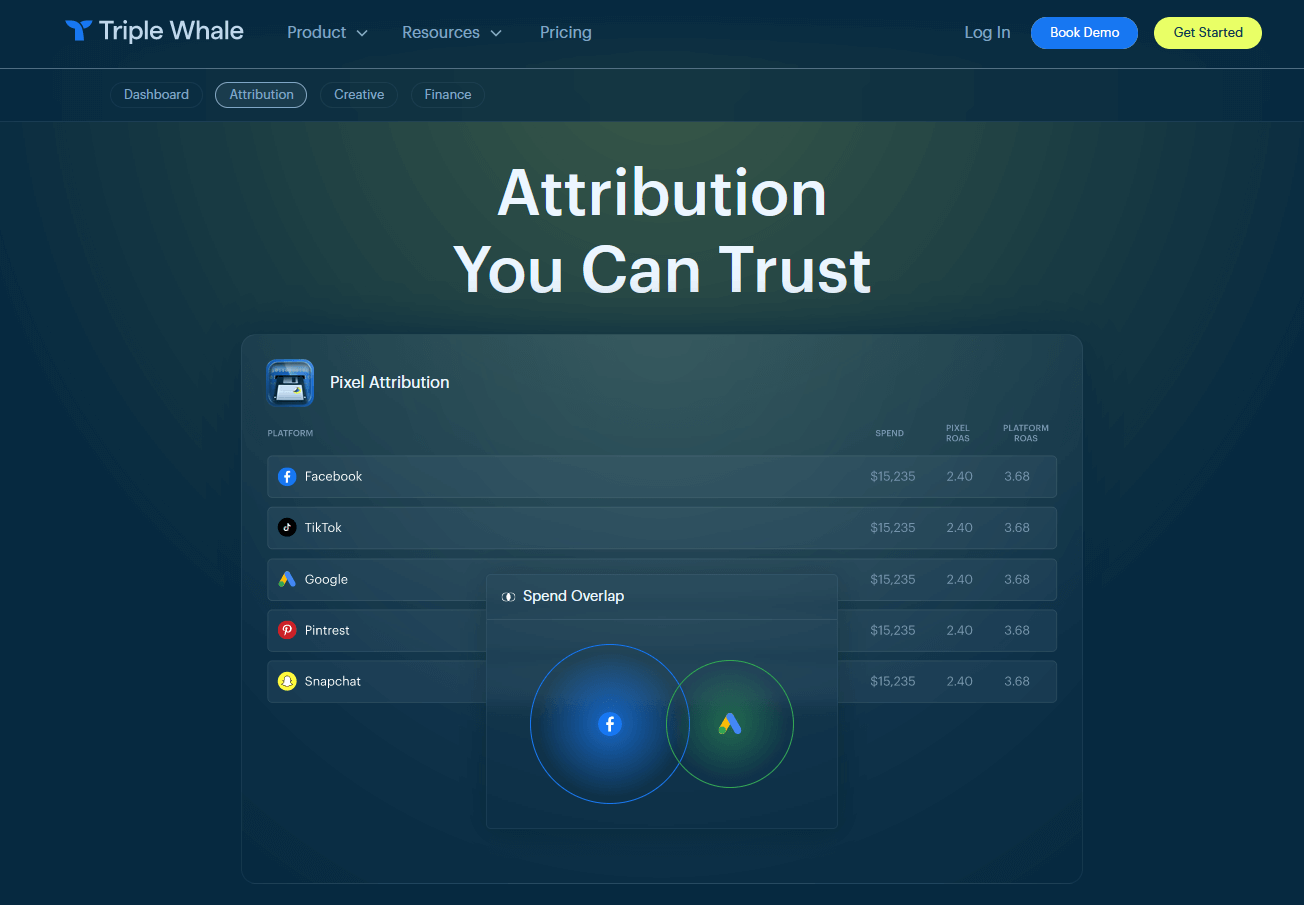
You can also try to figure out attribution manually by going through your Google Analytics data. However, this is a more time-consuming option and you’ll need someone on your team who really understands the platform.
That makes your Facebook ad campaign offer and creative assets more important than ever before.
The best way to reach your audience is by making Facebook ads that are irresistible and relatable, and that blend in with other social media posts in the news feed. In 2023, the best Facebook ads look nothing like Facebook ads. Instead, they look like entertaining posts from everyday Facebook users.
This Instagram ad from BetterHelp, created with Facebook ads, copies the style of personal blogs instead of looking like a sponsored Facebook video ad.
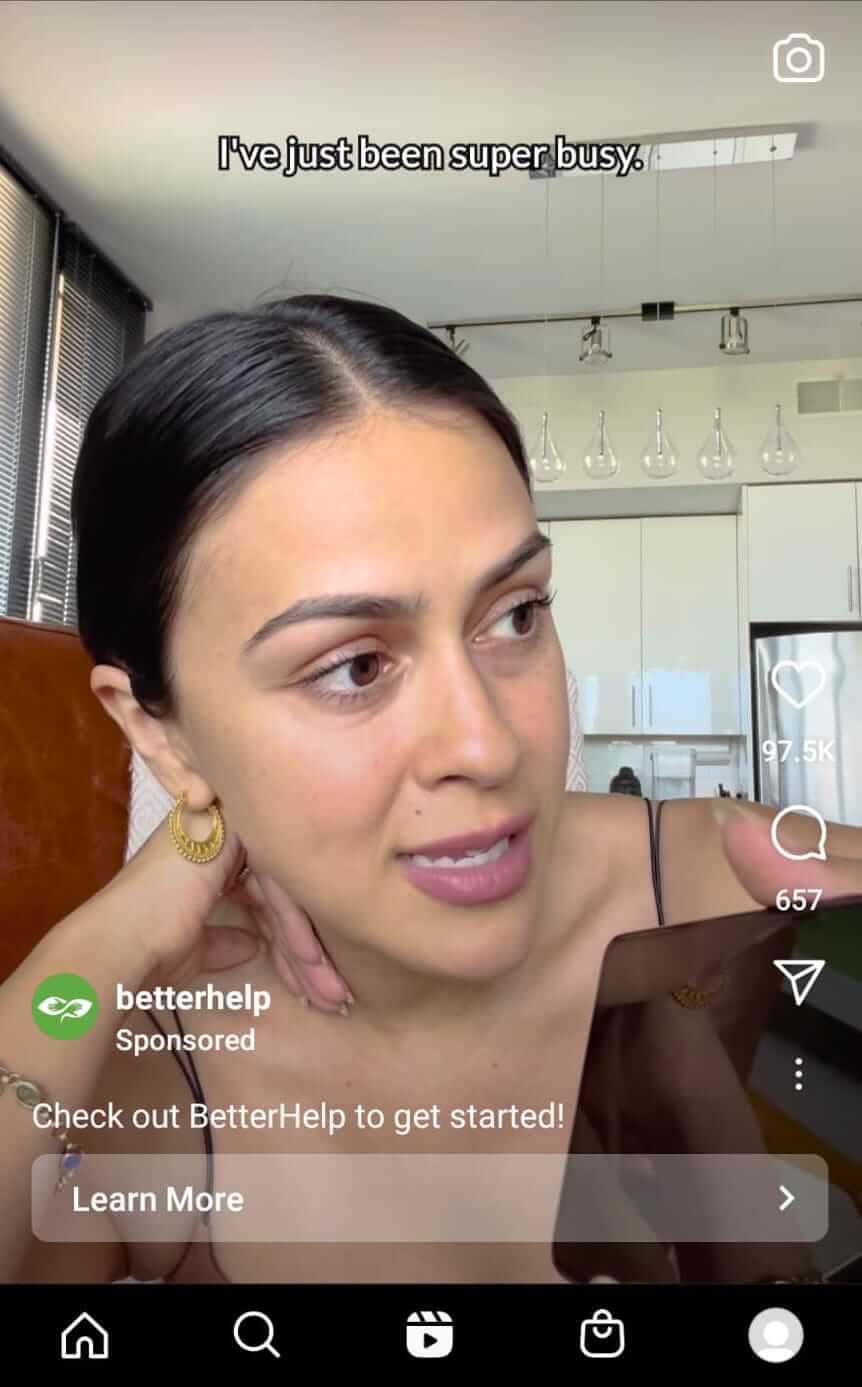
However, there’s one thing that’s even more important to your Facebook ads performance than the style of your ads: the offer.
The offer is what gets users’ attention. It makes them click the ad right away so you can track sales attribution. And the offer is what sets your brand apart from the competition.
To achieve all of this, you’re going to use the Offer Formula created by Smart Marketer. The formula lays out the four elements that make an offer completely irresistible:
Be realistic about what you’re asking for. Is the action appropriate to your audience, offer, and industry? Are you asking for too much, too soon? If you demand too much from people, they’ll ignore your Facebook ads and never look back. Instead, you have to learn what to ask for and how to offer value in return.
Figuring out the right action and pace depends on what kind of business you have. Here, we’re going to break businesses down into three groups:
That’s why lead generation is so important. It adds an intermediate step between first seeing the ad and making a purchase. You can use the data you collect through lead generation to nurture leads.
The most effective lead magnets are free templates and resources. These offer value to your audience and educate them about your business. Don’t worry about monetizing your lead magnets right away; the payoff will come later.
This online course provider uses templates at lead magnets in their Facebook and Instagram ads.
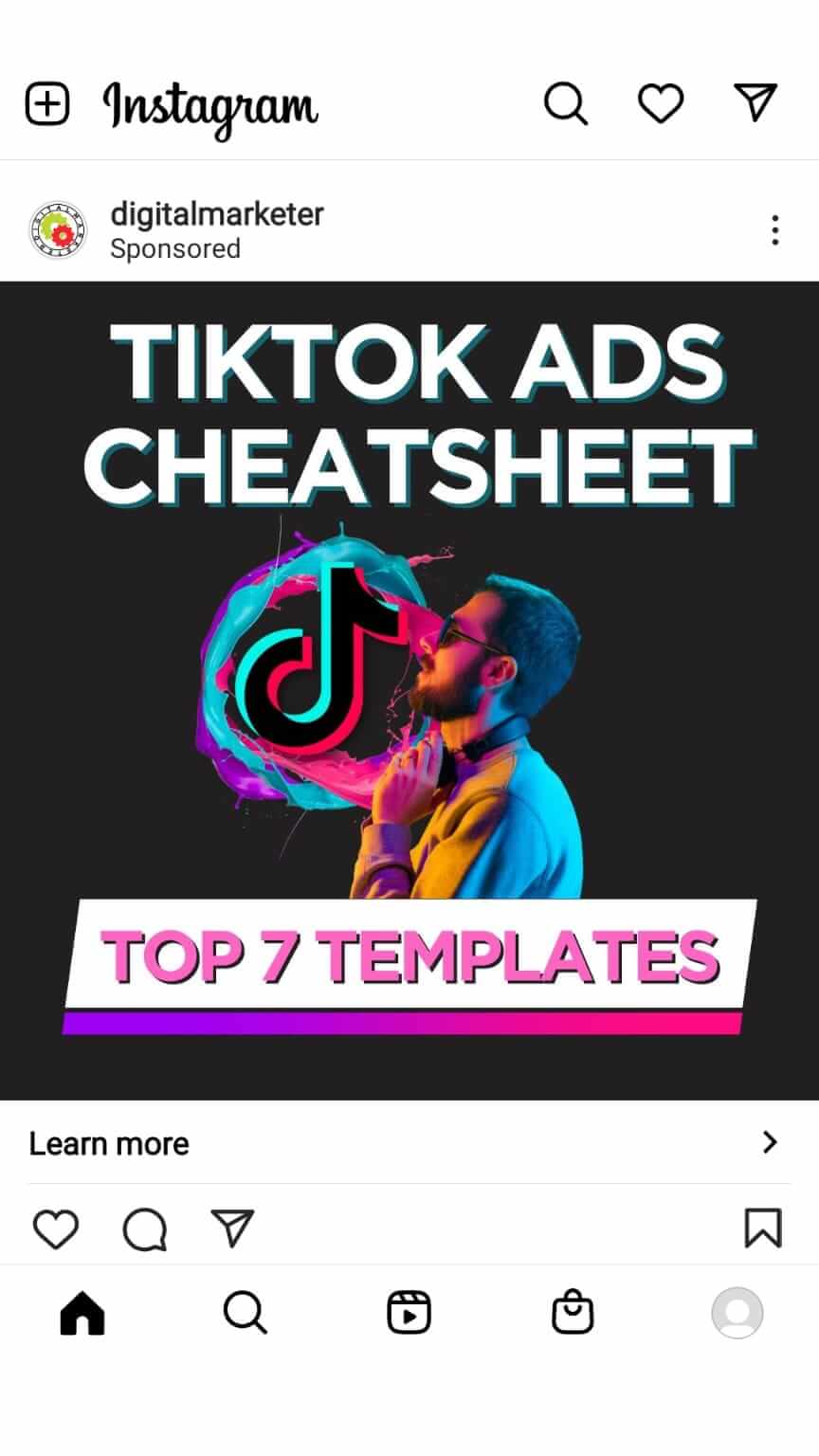
So you can be more direct with your ads strategy. Instead of using lead magnets, you can send traffic from your ads directly to a product page.
However, there’s one caveat. Remember what we said about “ads that don’t look like ads”? This is an effective strategy for eCommerce businesses to get Facebook ads working, too. Ads that look like customer reviews, vlogs, or fun behind-the-scenes clips can be highly effective sales tools. Create authentic, non-salesy content, and then add a link to your product page to close the sale.
This ad from GoPro looks just like another photo on Instagram but it has added shopping links.
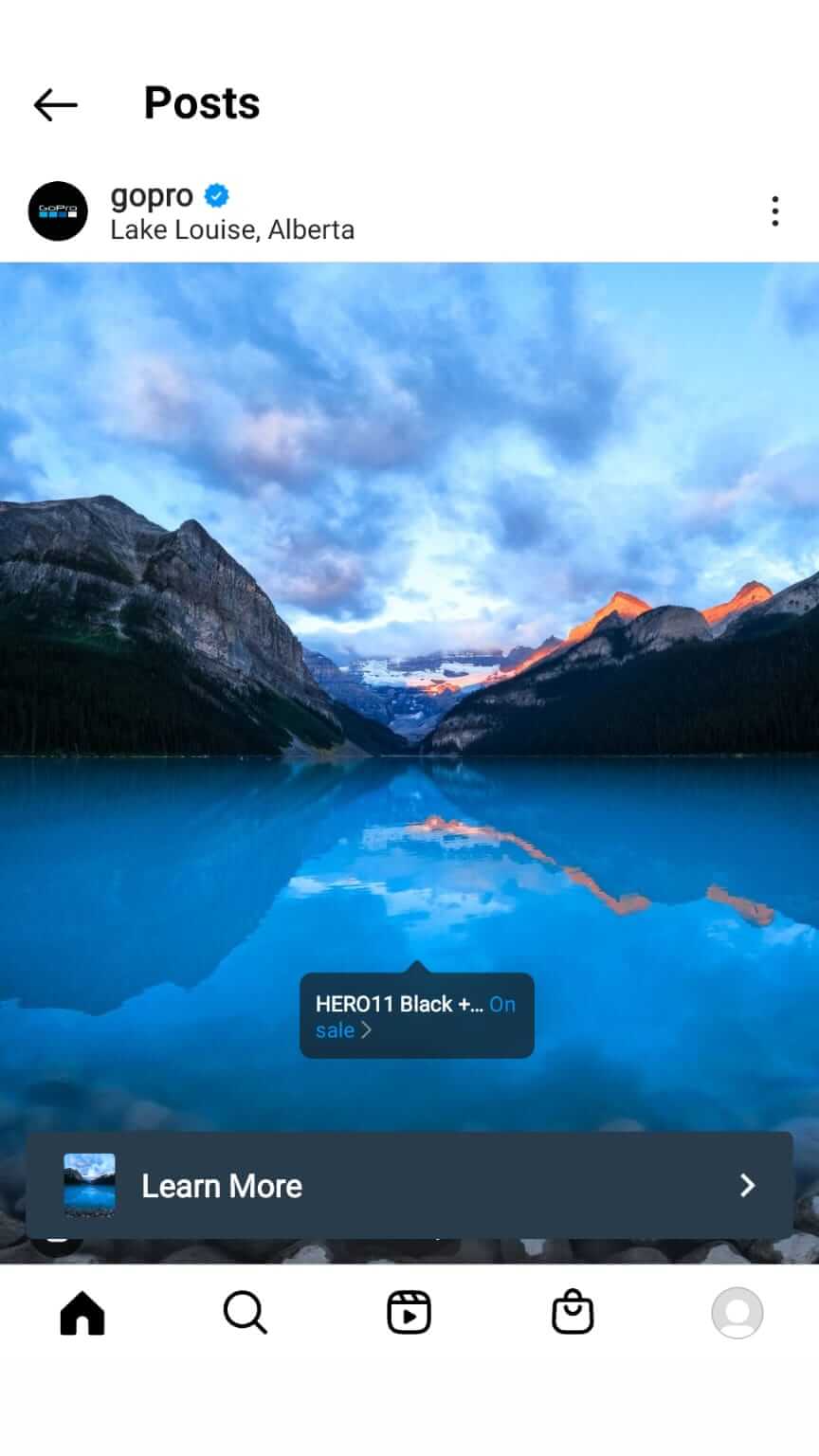
Often, they’ll offer a free software trial. But SaaS isn’t the same as eCommerce. You can’t go straight to the product.
Instead, just like information businesses, SaaS companies should focus on lead generation first. Choose some valuable content and gate it to use as a lead magnet. Once someone shares their details to access the resources, you can move to offering a software trial or sales call.
This SaaS company also uses templates as lead magnets, instead of immediately offering a free trial of the platform.

Now you need to answer the question, who is this offer for? Who do you want to take that desired action?
You need to think about what your audience is interested in and what they want to achieve. Forget demographics and focus on actions.
This strategy is also more effective, given Facebook’s newly limited data. It’s getting harder to track or target users based on who they are. But you can still reach people based on their interests.
Make no mistake: this will take some research. The best way to start is by creating avatars that represent your target audience, similar to buyer personas, and figuring out what their interests are.
You’ve found your audience. You know what you want them to do. But why should they do it right now? Why not wait until next month, or next year, or the next big sale?
Giving people a reason to act now is a key step that’s missing from a lot of Facebook and Instagram ads, especially for eCommerce products.
Here are some reasons you can give your audience:
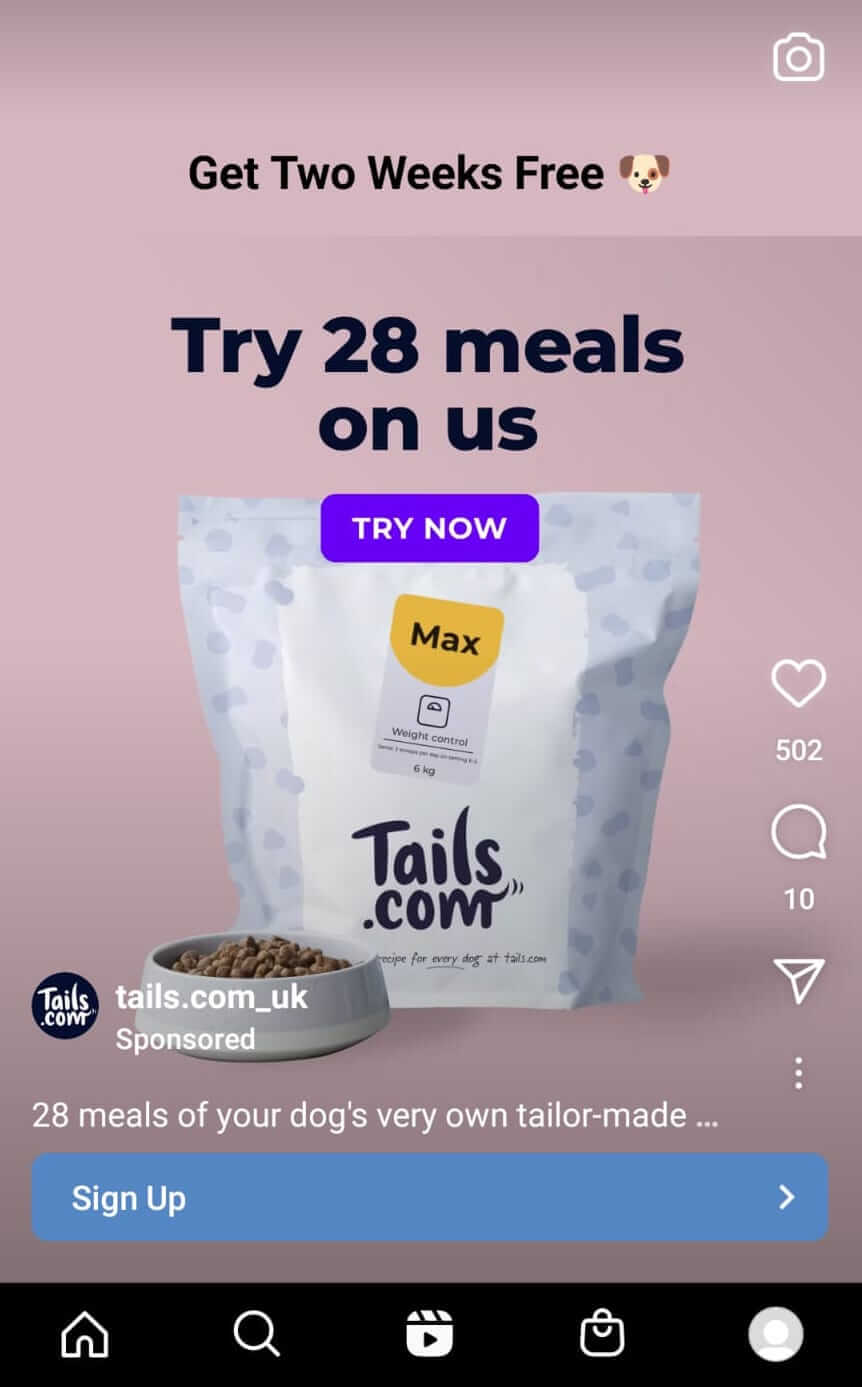
It should be integrated into every aspect of your ads: copy, creative, buttons, lead magnets, and landing pages. It should be reiterated at every stage of the sales funnel, from awareness, to interest, to taking action.
Ask yourself: What transformation are you providing to your customers? How are you going to change their lives? What’s their point A and what’s your point B?
This ad from Meta focuses on the transformation that an online course can provide.

To understand this step, it’s helpful to think about the value pyramid.
For example, if you’re offering a product that’s high-quality or affordable, those are functional benefits. You’re at the bottom of the pyramid.
But if your product can also improve customers’ emotions—for example, by making a task more enjoyable—that has a higher benefit. If it can impact their life in the long-term, that’s even better. And if your business is also doing good things in the world, that’s really attractive to customers.
One method is to tell a story. Literally tell the story of how you or one of your customers saw their life change as a result of your offer. Case studies, interviews, and personal anecdotes all fall into this category.
If you don’t have a specific, individual story to tell, you can focus on pain points versus benefits. Make a list of all of the pain points that your audience experiences, then match each one with a benefit of your offer. Show people how you can solve every problem on their list.
Finally, you can go down the education route. This is effective when you have a new product or service and need to make your case to an unfamiliar audience. Create a logical argument that first shows people they have a problem and then offers a way to solve it.
Each one of these tactics shows a transformation differently but they all have the same effect—making your audience realize that life can be better, if they tap on your ad right away.
When you target people with the right action, motivation, and transformation to get Facebook ad working, you’ll see the impact on your sales and ad metrics.
Are your Facebook ads underperforming? Wondering what can be done to increase your conversions?
In this article, you’ll discover a Facebook ads strategy that really works.
Running Facebook Ads in 2024
A few years ago, Facebook advertising dominated the social media marketing landscape. It was much easier to get Facebook ads working.Then… things got quieter. What happened?
Facebook ads got expensive and there was more competition for ad space on Facebook and Instagram. It was harder to get a return on your ad spend.
But things have started to change once again. eCommerce businesses are seeing their revenue grow. It’s easier to get valuable ad placements. The average Facebook ads cost has finally started to fall.
If you’re still using Facebook ads, it’s a good time to step up your strategy. And if you had given up on the platform, it’s time to get back to creating Facebook ads in 2023.
Facebook Advertising Campaign Performance Data and Tracking
The biggest internal change to how Facebook ads work is in how the platform handles data.Privacy and tracking restrictions have gotten a lot stricter due to browser updates and new laws around the world. That means Facebook now has less data about user activity and some of it is less accurate. It’s also harder to connect Facebook activity with sales—even when Facebook ads are directly responsible for a lead.
Result: your audience is still on Facebook and Instagram but you’ll have to be smarter about finding them.
First, you can use Facebook’s built-in tools for analytics, including the Facebook pixel and the Conversions API to track attribution from your Facebook ads to your eCommerce store. This will help you capture more activity on your website from social media sources.
There are tools on the market that can gather even more information such as Triple Whale, Wicked Reports, or Northbeamfor larger businesses. These systems aggregate data from your Facebook ads and website, and then use machine learning to look for patterns and correlations to help attribute sales. They’ll pick up on connections that Facebook’s own tools may have missed.
You can also try to figure out attribution manually by going through your Google Analytics data. However, this is a more time-consuming option and you’ll need someone on your team who really understands the platform.
Create Facebook Ads That Don’t Look Like Ads
There’s more opportunity on Facebook right now but with less data for targeting and tracking your Facebook ads.That makes your Facebook ad campaign offer and creative assets more important than ever before.
The best way to reach your audience is by making Facebook ads that are irresistible and relatable, and that blend in with other social media posts in the news feed. In 2023, the best Facebook ads look nothing like Facebook ads. Instead, they look like entertaining posts from everyday Facebook users.
This Instagram ad from BetterHelp, created with Facebook ads, copies the style of personal blogs instead of looking like a sponsored Facebook video ad.

However, there’s one thing that’s even more important to your Facebook ads performance than the style of your ads: the offer.
The Facebook Ads Offer Formula
The single most important aspect of your Facebook ads strategy in 2023 is the offer.The offer is what gets users’ attention. It makes them click the ad right away so you can track sales attribution. And the offer is what sets your brand apart from the competition.
To achieve all of this, you’re going to use the Offer Formula created by Smart Marketer. The formula lays out the four elements that make an offer completely irresistible:
- Desired action. A clear next step that you want viewers to take.
- Relevance. Ad copy and creative that speaks to your audience’s lives.
- Reason to act now. A sense of urgency that will get you instant clicks.
- Transformation. A story that your audience will aspire to.
#1: Desired Action
For every ad you post from your Facebook page, you should have a clear idea of what you want people to do.Be realistic about what you’re asking for. Is the action appropriate to your audience, offer, and industry? Are you asking for too much, too soon? If you demand too much from people, they’ll ignore your Facebook ads and never look back. Instead, you have to learn what to ask for and how to offer value in return.
Figuring out the right action and pace depends on what kind of business you have. Here, we’re going to break businesses down into three groups:
- Information businesses
- eCommerce
- SaaS companies
Facebook Ads for Information Businesses
Information businesses such as course creators generally need time to make a sale. To get Facebook ads working, you have to build trust and establish your expertise before you can convert people into customers.That’s why lead generation is so important. It adds an intermediate step between first seeing the ad and making a purchase. You can use the data you collect through lead generation to nurture leads.
The most effective lead magnets are free templates and resources. These offer value to your audience and educate them about your business. Don’t worry about monetizing your lead magnets right away; the payoff will come later.
This online course provider uses templates at lead magnets in their Facebook and Instagram ads.

Facebook Ads for eCommerce
eCommerce ads usually work faster than information business ads. The sales funnel is shorter. People see your paid advertising and they make a decision to purchase your products—or not.So you can be more direct with your ads strategy. Instead of using lead magnets, you can send traffic from your ads directly to a product page.
However, there’s one caveat. Remember what we said about “ads that don’t look like ads”? This is an effective strategy for eCommerce businesses to get Facebook ads working, too. Ads that look like customer reviews, vlogs, or fun behind-the-scenes clips can be highly effective sales tools. Create authentic, non-salesy content, and then add a link to your product page to close the sale.
This ad from GoPro looks just like another photo on Instagram but it has added shopping links.

Facebook Ads for SaaS Companies
What’s the most common marketing strategy SaaS companies use to get Facebook ads working?Often, they’ll offer a free software trial. But SaaS isn’t the same as eCommerce. You can’t go straight to the product.
Instead, just like information businesses, SaaS companies should focus on lead generation first. Choose some valuable content and gate it to use as a lead magnet. Once someone shares their details to access the resources, you can move to offering a software trial or sales call.
This SaaS company also uses templates as lead magnets, instead of immediately offering a free trial of the platform.

#2: Relevance
You’ve decided what to offer in your Facebook ads, based on your business type.Now you need to answer the question, who is this offer for? Who do you want to take that desired action?
You need to think about what your audience is interested in and what they want to achieve. Forget demographics and focus on actions.
This strategy is also more effective, given Facebook’s newly limited data. It’s getting harder to track or target users based on who they are. But you can still reach people based on their interests.
Make no mistake: this will take some research. The best way to start is by creating avatars that represent your target audience, similar to buyer personas, and figuring out what their interests are.
#3: Reason to Act Now
Next, you need to add some urgency.You’ve found your audience. You know what you want them to do. But why should they do it right now? Why not wait until next month, or next year, or the next big sale?
Giving people a reason to act now is a key step that’s missing from a lot of Facebook and Instagram ads, especially for eCommerce products.
Here are some reasons you can give your audience:
- Scarcity. Do you have limited stock? Let people know!
- Limited time only. Similar to scarcity, you can tell people that time’s running out on the offer.
- Exclusive price. This tactic works really well on social media. Offer a price that people can’t find anywhere else. They can only get the deal by clicking on your Facebook ad, right this second.
- Tools such as Deadline Funnel that motivate customers by showing countdown times on specific offers.
- Bonuses. This is a popular tactic for SaaS and information businesses, where bonus items or resources are bundled together with the main product on sale. It should be something of high value that’s relevant to the main offer.
- Exclusive giveaway. Similar to offering an exclusive price, you can run a prize draw which is only open to people who purchase through your Facebook ads.

#4: Transformation
The final step in our Facebook ads formula is the most important of all.It should be integrated into every aspect of your ads: copy, creative, buttons, lead magnets, and landing pages. It should be reiterated at every stage of the sales funnel, from awareness, to interest, to taking action.
Ask yourself: What transformation are you providing to your customers? How are you going to change their lives? What’s their point A and what’s your point B?
This ad from Meta focuses on the transformation that an online course can provide.

To understand this step, it’s helpful to think about the value pyramid.
What’s the Value Pyramid?
The value pyramid has four levels:- The base: functional benefits
- Next step: emotional transformation
- Next step: changing lives
- The top of the pyramid: changing the world, or social impact
For example, if you’re offering a product that’s high-quality or affordable, those are functional benefits. You’re at the bottom of the pyramid.
But if your product can also improve customers’ emotions—for example, by making a task more enjoyable—that has a higher benefit. If it can impact their life in the long-term, that’s even better. And if your business is also doing good things in the world, that’s really attractive to customers.
How to Tell Transformation Stories
Once you’ve figured out where you are on the pyramid, you have to express it to your audience. So how can you help them understand the transformation on offer?One method is to tell a story. Literally tell the story of how you or one of your customers saw their life change as a result of your offer. Case studies, interviews, and personal anecdotes all fall into this category.
If you don’t have a specific, individual story to tell, you can focus on pain points versus benefits. Make a list of all of the pain points that your audience experiences, then match each one with a benefit of your offer. Show people how you can solve every problem on their list.
Finally, you can go down the education route. This is effective when you have a new product or service and need to make your case to an unfamiliar audience. Create a logical argument that first shows people they have a problem and then offers a way to solve it.
Each one of these tactics shows a transformation differently but they all have the same effect—making your audience realize that life can be better, if they tap on your ad right away.
When you target people with the right action, motivation, and transformation to get Facebook ad working, you’ll see the impact on your sales and ad metrics.
Последнее редактирование модератором:



